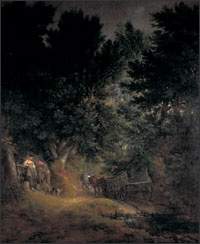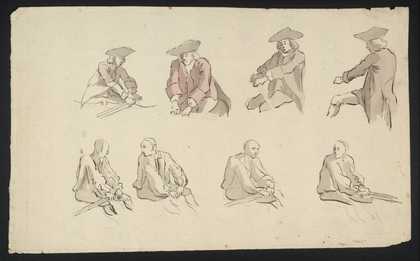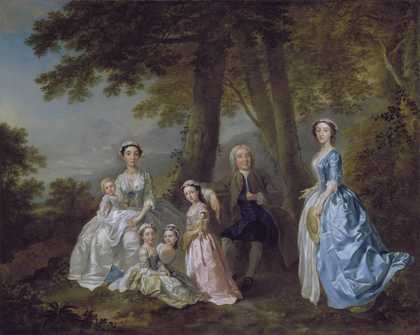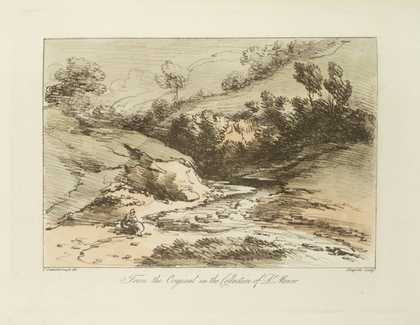Son of a dissenting manufacturer of woollen fabrics at Sudbury, the young Gainsborough spent his prentice years in London in the middle 1740s in association with Gravelot and Hayman, the latter of whom was then at work on his decorations for Vauxhall Gardens.
Gainsborough’s natural talents shine most clearly in the work of the Suffolk years. From the picture of The Charterhouse, painted on a visit to London in 1748, which has a timeless enchantment, to the unfinished group of his daughters chasing a butterfly, which may well be the last of his Suffolk paintings, his originality and natural gifts appear unclouded by the requirements of fashion.
In his Bath years, from 1760 to 1774, Gainsborough tried to become a fashionable portrait painter and was forced gradually to abandon more and more those intimations of informality which give freshness to his style. His struggles to retain them in the formal portrait produced such masterpieces as the Robert, Earl Nugent, his earliest exhibited portrait and the White Lady.
From 1774 Gainsborough settled in London for good. He had a steady flow of clients for portraits, yet his sitters do not represent all classes of Society. He excelled in portraits of people of the world of music and the theatre, of the Royal Family and in the solid virtues of the merchant classes. His most powerful male portraits are of Truman, the brewer, Mark Beaufoy and of people with no nonsense about their character.
Country Members of Parliament like Lord Nugent, Joshua Grigby and Abel Moysey are also among his particular excellences.
Towards the close of his life, Gainsborough was working in a maturer and more experimental vein than ever before: his unfinished experiments, such as the Musidora or the Diana and Actaeon, show that he was on the road to creating a new style which would have greatly enriched the British tradition of painting if he had not been struck down by illness.
EK Waterhouse




